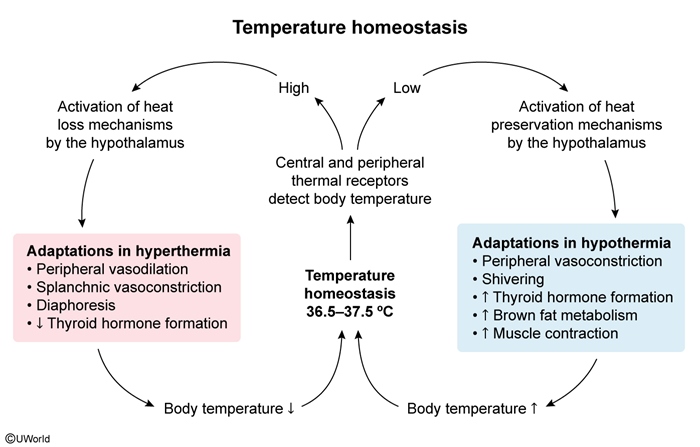Heat Stroke
Article Sections
Introduction
Heat stroke is a life-threatening condition characterized by an elevated core body temperature (often above 40 C [104 F]) associated with CNS dysfunction. The condition results from prolonged exposure to high environmental temperatures that overwhelm the body's ability to effectively dissipate heat. Heat stroke is categorized as exertional or nonexertional based on the etiology that leads to hyperthermia. Clinical manifestations include flushed skin, altered mental status, tachycardia, tachypnea, and end-organ dysfunction (eg, renal/hepatic failure).
Pathogenesis
The body normally maintains a core temperature around 37 C (98.6 F) through multiple thermoregulatory mechanisms controlled by the preoptic nucleus of the anterior hypothalamus (Figure 1). Increases in body temperature stimulate:
- Diaphoresis (sweating): evaporation of water from the skin, which is the most effective mechanism for releasing excess heat
Continue Learning with UWorld
Get the full Heat Stroke article plus rich visuals, real-world cases, and in-depth insights from medical experts, all available through the UWorld Medical Library.
Figures
